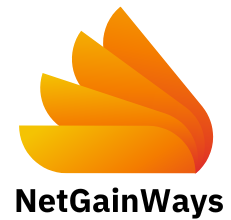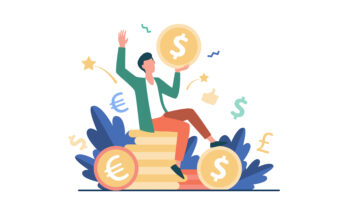Shutterstock is a premier platform for photographers, videographers, illustrators, and musicians to monetize their creative work. Established in 2003 by Jon Oringer, Shutterstock has grown into a global marketplace with millions of customers and an extensive library of over 300 million images, videos, and music tracks. Here’s an in-depth look at how you can leverage Shutterstock to earn money with your creative content.
What is Shutterstock?
Overview:
- Founded: 2003
- Headquarters: New York City, USA
- Services: Shutterstock provides a vast library of high-quality licensed photographs, vectors, illustrations, videos, and music. It serves a diverse clientele, including businesses, marketing agencies, media organizations, and individual creators.
Types of Content Available:
- Photos: High-resolution images that cover a wide range of themes and subjects.
- Vectors and Illustrations: Scalable graphics suitable for various digital and print media applications.
- Videos: High-quality video footage and animations.
- Music: Audio tracks and sound effects for multimedia projects.
- Editorial Content: Images and videos for news, sports, entertainment, and events.
How to Earn with Shutterstock

1. Becoming a Contributor
To start earning with Shutterstock, you need to become a contributor. Here’s a step-by-step guide:
Step-by-Step Process:
- Sign Up: Create an account on Shutterstock and apply to become a contributor. This involves providing some personal information and agreeing to the contributor terms.
- Upload Content: Once your account is approved, you can start uploading your photos, videos, vectors, or music. Each submission goes through a review process where Shutterstock checks for quality, relevance, and compliance with their guidelines.
- Get Approved: If your content meets Shutterstock’s standards, it will be approved and added to the Shutterstock library. Approved content becomes available for customers to purchase and download.
2. Earnings Model
Shutterstock offers a structured earnings model based on the type of content you provide and your contribution level. Here’s how it works:
Royalties:
- Photo and Vector Downloads: Earn a percentage of the sale price each time a customer downloads your image or vector. The royalty rate varies based on your earnings tier.
- Video Downloads: Earn a higher royalty percentage for video downloads, reflecting the typically higher value of video content.
- Music Downloads: Similar to photos and videos, you earn royalties each time a customer downloads your music track.
Earnings Tiers:
- Contributors are placed in different earnings tiers based on their total lifetime earnings on Shutterstock. Higher tiers offer higher royalty rates. For example:
- Tier 1: Up to $500 in lifetime earnings.
- Tier 2: $500 to $3,000.
- Tier 3: $3,000 to $10,000.
- Tier 4: $10,000 to $50,000.
- Tier 5: Over $50,000.
On-Demand Sales:
- Customers can purchase your content individually. You earn a percentage of the sale price for each on-demand purchase.
Subscription Downloads:
- Many customers subscribe to Shutterstock, allowing them to download a set number of images per month. Contributors earn a flat fee for each download by subscription customers.
3. Maximizing Your Earnings

To optimize your earnings on Shutterstock, consider the following strategies:
Quality and Quantity:
- Consistently upload high-quality content. Focus on clarity, composition, and uniqueness.
- Increase the volume of your uploads to boost the likelihood of downloads. More content means more opportunities for sales.
Trendy and Niche Content:
- Stay updated with market trends. Create content that is in high demand, such as seasonal themes, popular events, and trending topics.
- Niche content can also be lucrative. Identify gaps in Shutterstock’s library and produce specialized content that meets those needs.
Keywords and Metadata:
- Use relevant and specific keywords to make your content easily discoverable. Effective keywords enhance the visibility of your work in search results.
- Write detailed and accurate descriptions. Good metadata helps customers find your content more efficiently.
Exclusive Content:
- Offering exclusive content to Shutterstock can lead to higher royalty rates. Exclusivity means your content is only available on Shutterstock, which can attract more dedicated customers.
4. Promotion and Portfolio Management
Promoting your work and managing your portfolio effectively can significantly impact your earnings. Here are some tips:
Social Media and Personal Website:
- Use social media platforms to promote your Shutterstock portfolio. Share links to your content and engage with your audience.
- Create a personal website to showcase your portfolio. This can drive additional traffic and potential sales to your Shutterstock content.
Engage with the Community:
- Participate in Shutterstock forums, groups, and community events. Engaging with other contributors can provide valuable insights, feedback, and inspiration.
Monitor Performance:
- Utilize Shutterstock’s analytics tools to track your sales and performance. Analyze which types of content perform best and focus on producing similar work.
- Adjust your strategy based on performance data. If certain keywords or themes are performing well, consider creating more content in those areas.
Conclusion

Shutterstock offers a robust platform for creative professionals to monetize their work. By becoming a contributor, leveraging the earnings model, maximizing your content’s potential, and actively promoting your portfolio, you can build a steady income stream. Consistency, quality, and market awareness are key to success on Shutterstock.
Recommended: 14 ways to earn money online


